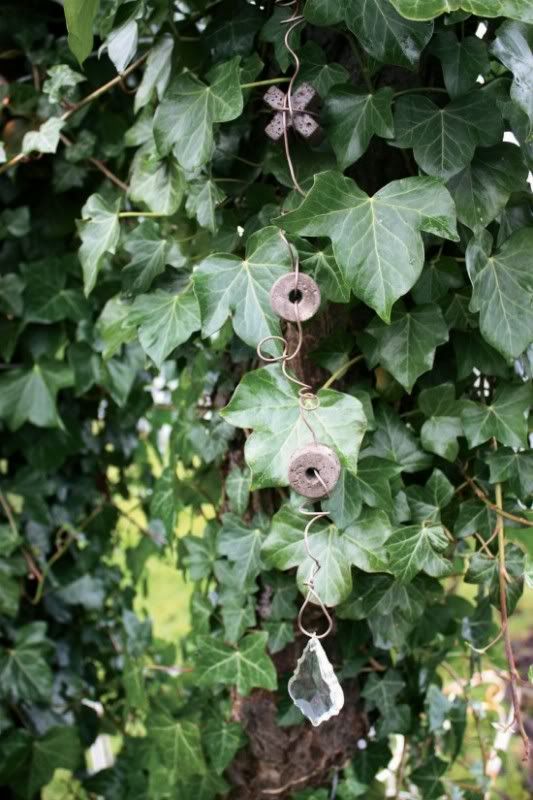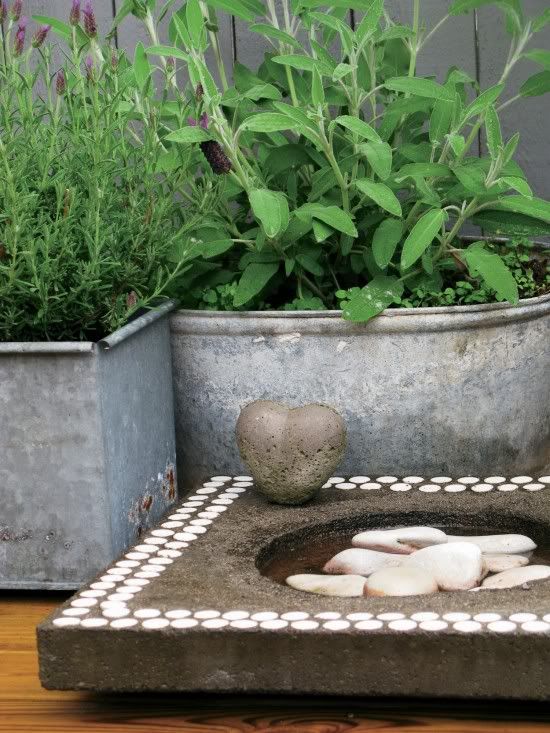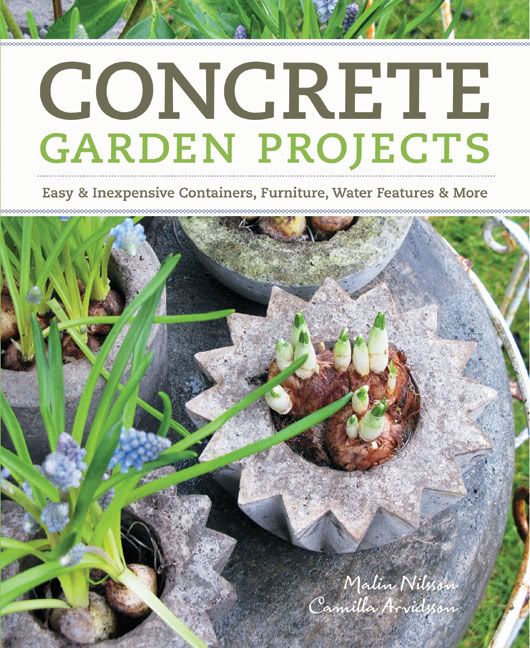The book covers many projects -- everything from small pots, big pots, stepping stones, small water features, and birdbaths, to larger projects such as a concrete barbecue stand, a potting bench and a large water feature. It’s divided in two parts. Part One, which takes up about three quarters of the book, tells about the various projects in general, talks about how to use them in the garden and shows photos of each finished project. Part Two, the final quarter of the book, contains detailed step-by-step instructions and photos showing exactly how to make each project.
 |
| The book contains instructions for making this hanging ornament |
I’ve wanted to use concrete to make garden ornaments for years now, but have never gotten around to it. There is something intimidating about it for me. This book might have been just what I needed to get going. It’s a good book with an informal, encouraging tone for beginners like me. But it has more complicated and creative projects as well, for those who have been working with concrete already.
Here’s an excerpt:
“There is a lot of beauty in nature, and forests provide a wealth of material for making impressions in concrete, like interesting leaves, twigs or any other foliage. Leaves from hostas, hollyhocks and maple trees make great stamps. Simple tiles like the ones with a leaf print here (these leaves were picked from a garden) will look good leaning against a tree, a fence or a shed wall. Place them in a flowerbed for plants to grow around them or try laying the tile flat and filling the leaf impression with water to make a small garden mirror.”
If you’re a creative gardener trying to figure out what to put on your want list for Christmas, this book would be a good start. Or, if you know gardeners who might like a small concrete ornament for Christmas, buy the book now and get busy!
 |
| I really like this concrete birdbath with the galvanized planters! |
I’m planning some time next week to make a project similar to the one in this last picture. Mine will be smaller. I’ve been gathering the materials for a couple of weeks now. If all goes well, I’ll write a blog post about it.
***********
Timber Press is a Portland, Oregon, publisher of books on gardening, ornamental and edible horticulture, garden design, sustainability, natural history, and the Pacific Northwest. They sent me the book for free, and didn't tell me what to say in my review. They didn't actually even require that I write a review.


















































